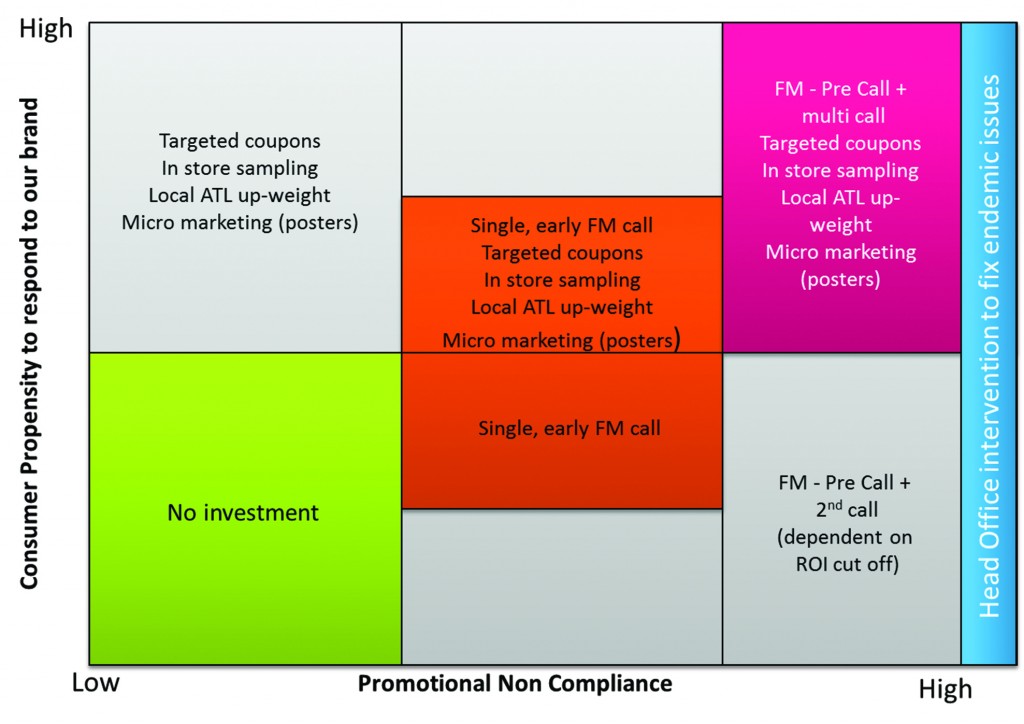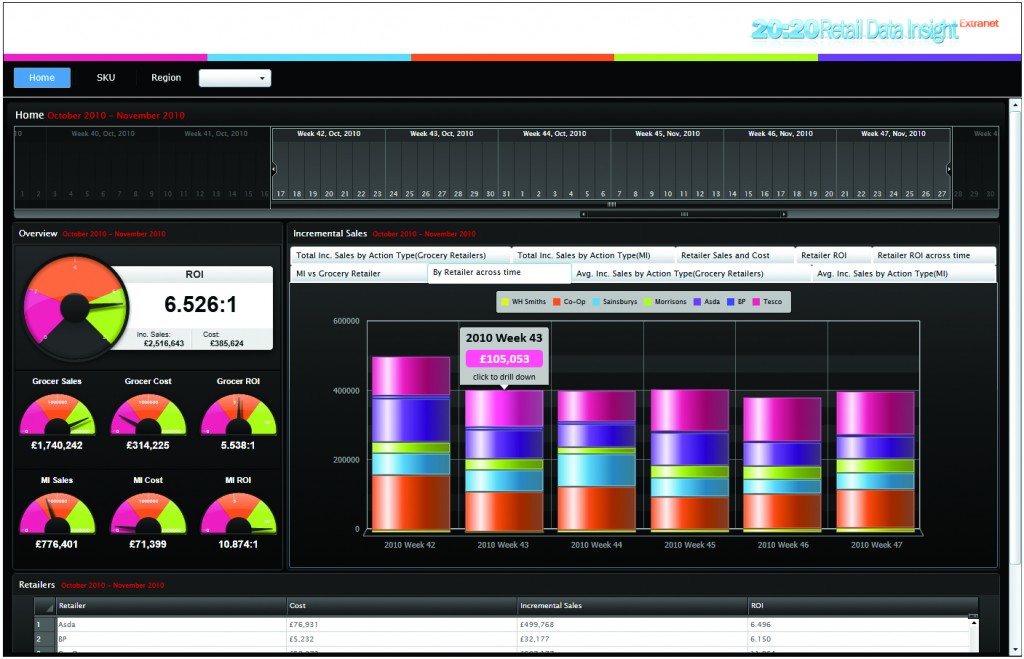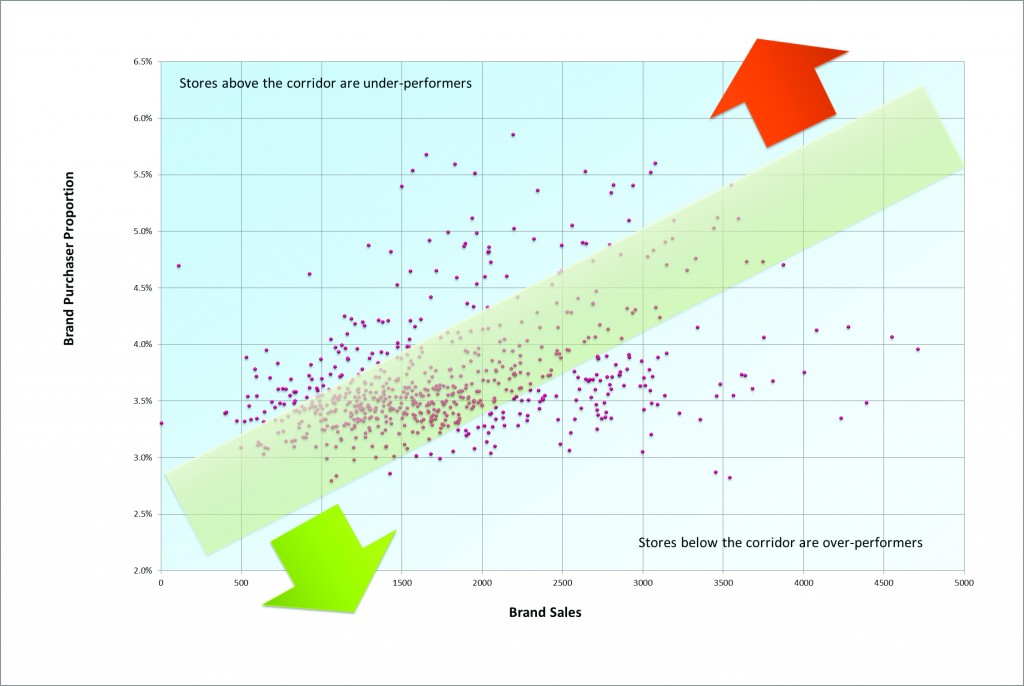Field Force Optimisation
Share
Campaign: Field Force Optimisation
Client: Four undisclosed FMCG brands
Agency: Red Ark
Software: 20:20 RDI
Editor’s Note: Although we demand a high level of transparency around our case study submissions, I’ve long received requests for FMCG case studies. In this unique case we’ve allowed a brandless submission to cater for these requests.
Background
Every year, FMCG companies across Europe, the US and Australia spend millions of pounds, euros or dollars on their field force marketing teams. Whether they’re in-house teams, or sourced from a field force agent, the task of these people is to visit supermarkets (and route stores), check that planograms are being implemented, that point of sale is up, sell in or implement upcoming promotions and build relationships with the store managers, so that their brand gets the optimal presence in-store. They’re also tasked with ensuring that new product launches get off the ground – is the product on shelf? Is any point of sale material that is supposed to be there actually there? If it’s not on shelf, why not?
Their visit, and the results are recorded and fed back to the brand owner. But, with so much data, it can be hard for the brand owner to know what value they are adding. The only way they can really work this out is to marry up the field force activity with the scan data, and this can be a formidable data processing task.
The size of the task also varies by market. In the UK and Europe, there are smaller distances and a much wider variety of retailers, so getting retailers competing against each other for field force effectiveness is a valid challenge. Here in Australia with a virtual duopoly, FMCG marketers may feel helpless at the hands of Coles and Woolworths. But that’s not the case. Significant savings can be made through the better deployment of field forces, by marrying up field force activity with scan data, monitoring it on an ongoing basis, and redeploying your field force to the stores where they can make the most difference. If you outsource your field marketing to an agency, this will also ensure you are getting the service you are paying for. Because, despite what the big retailers tell you, every store performs differently, and the performance of stores can be changed.
There is one basic premise, however. At the top end, the bigger stores with the most volume that get the most visits will tend to be compliant. Retailers generally allocate their best managers to the biggest stores and their performance is often notably better – a bit of a self-fulfilling prophecy. Visiting them more, or even visiting them less, will not affect the visibility and the sales performance of your brand significantly in these bigger, better stores. At the bottom end, no matter how many times you visit or what you do, they will continue to underperform. It’s the stores in the middle where your field force can make a difference. It’s in identifying and maximising that ‘size of prize’ where 20:20 RDI has been able to save, or generate, millions for its FMCG customers.
Objectives
– reduce expenditure on field force activity through more effective targeting of resource
– identify why some SKUs (stock-keeping unit) and/or stores are underperforming in product launches, and
– identify which stores are optimal locations for product launches based on geo-demographic analysis.
Strategy
– Combine retailer EPoS (electronic point of sale) data, consumer demographic profiling and field marketing activity data to analyse what worked or failed in the past.
– Use data modelling tools to calculate where to assign resources based on the potential to increase sales in a particular store.
– Use extranet-based reporting tool to show what incremental sales value has been added by a store level intervention.
– Reallocate resources to increase sales and reduce costs – right down to an individual action performed on a SKU in a specific store.
Execution
The agency collected historic sales visit and sales data information (by store and by SKU) and constructed a database containing:
– all major grocery retailers at outlet level
– Y axis – consumer propensity index by store using:
1. geodemographic profiles of shopper
2. geodemographic profiles for the brand in question
– X axis – store level operational non-compliance
1. EPoS sales for 12-months by store by SKU
2. promotional details – mechanics, timings, and
3. promotional compliance score carding data.
The database allowed the agency to perform:
– historic analysis showing over and underperforming stores
– predictive modelling demonstrating the potential to optimise future promotional uplifts both by fixing non-compliance, and also by targeting high consumer propensity to respond, and
– initiate a detailed action plan showing what mix of activities to undertake by store in order to maximise sales and ROI.
The clients were able to drill down through results via an extranet showing activity and performance by SKU and by store.
Results
Here is a round-up of results from the clients (both within Australia and in overseas markets).
Analysis of store visits and their effectiveness for FMCG company A:
– 14 percent of stores received fewer calls than was agreed with the brand owner
– 22 percent of stores were called on more often than agreed (sometimes much more often!) with no discernible sales benefit
– over three months, 300 stores received two visits in one day – according to the visit data – there was no defined reason for these visits, and
– there was no real correlation between the number of visits made and sales volumes achieved – of stores with 10 or more visits over an eight-week period, there was a gap of $65,000 between the sales of the top store and the sales of the bottom store.
This data could then be used to renegotiated KPIs and service levels with the field force provider.
Significant variations in promotional performance by store were identified for FMCG company B:
– promotional performance by store varied enormously by store – from +754 percent to -13 percent with average uplift of 380 percent
– this was because compliance was poor – stores started late, finished early, didn’t stock all the SKUs and ran out of stock on shelf during the promotion
– there was at least as much potential in stores achieving high overall uplifts as there was in poorly performing stores, because of systemic poor planning and execution of events and persistent ‘rogue’ stores, and
– potential sales lost over the promotion period due to poor distribution, visibility, availability and promotional performance totalled almost £900,000.
Significant cost savings for FMCG company C:
– calls were too long and too frequent to stores where the field force could not add value
– segmented the call cycle by weekly/three-weekly/six-weekly and by number of minutes to be spent in each store
– store data was analysed each week and instructions on what to fix in each store (e.g. missing shelf edge label, check POS, check stock levels) were sent to the rep’s notebook
– performance of each store/visit/rep monitored via client extranet, and
– reduced a spend of $10 million per annum to $6 million per annum.
Planned product roll-out for premium product via geodemographic modelling and targeting for FMCG company D found:
– store catchment areas defined by drive times, consumer profile and proximity of competitor outlets
– forecasts total number of consumers likely to visit each store
– predicted how many of those will be the brand’s customers – percentage of profile consumers in a particular store
– highlighted underperforming stores to receive priority action, and
– highlighted overperforming stores that represent ‘Best Practice’.


















